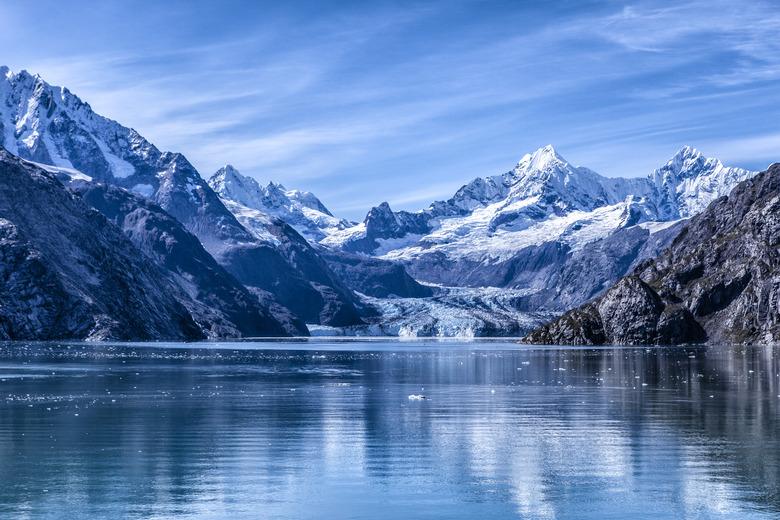What Happens When A Glacier Melts?
As the average global temperature increases, glaciers melt and retreat back up the valleys they flowed down. When glaciers disappear, the landscape stops being eroded by tons of ice and starts to be reclaimed by plant and animal life. With enough glacial melt, sea levels and landmasses can rise and fall.
Glacial Melt
Glacial Melt
For a glacier to retreat, it has to melt. The ice disappears and the front edge of the glacier moves up valley. Glacial melt increases water flow and creates stream valleys and rivulets. It also creates glacial lakes, which can lead to dangerous flash floods, known as mountain tsunamis, if the flow is blocked and natural dams break.
Moraines and Landforms
Moraines and Landforms
With the ice gone, evidence of a glacier's erosion is revealed. Moraines, small hills of debris, mark the end of the glacier or the lateral path it took down the valley. Large amounts of sand and gravel, which were eroded from the mountainsides, are also left behind.
On flatter terrain, blocks of ice can be trapped in loose sediment, eventually melting to form kettle lakes. Glacial erratics, large, conspicuous boulders displaced from mountains, also remain.
Isostatic Rebound
Isostatic Rebound
Giant continental ice sheets put huge amounts of weight on the landmasses they cover. If the sheets melt in such places as Greenland or after the last ice age, the weight is removed. This causes the land underneath to rebound upward.
This can affect huge areas, depending on the size of the ice sheet. For example, parts of Scandinavia and Canada have risen dramatically since the ice sheets disappeared, exposing new land along the shorelines.
Sea Levels Rise
Sea Levels Rise
If a majority of the world's glaciers melt, including ice sheets, sea levels would rise significantly. Although mountain glaciers contain a small amount of water, if they completely melt, it would raise sea level by a half-meter, according to the U.S. Geological Survey. But the largest ice sheets and glaciers, in Antarctica and Greenland, hold enough water to flood coastal cities and drastically change the world's coastlines.
Cite This Article
MLA
Simmons, Marty. "What Happens When A Glacier Melts?" sciencing.com, https://www.sciencing.com/happens-glacier-melts-8149130/. 22 November 2019.
APA
Simmons, Marty. (2019, November 22). What Happens When A Glacier Melts?. sciencing.com. Retrieved from https://www.sciencing.com/happens-glacier-melts-8149130/
Chicago
Simmons, Marty. What Happens When A Glacier Melts? last modified March 24, 2022. https://www.sciencing.com/happens-glacier-melts-8149130/
